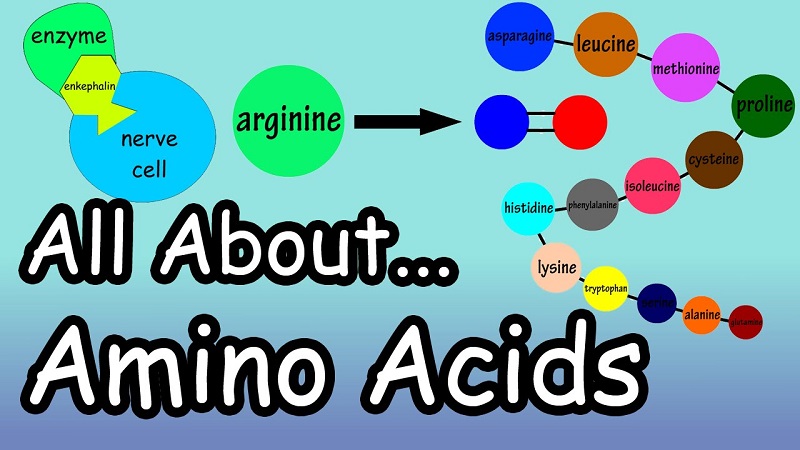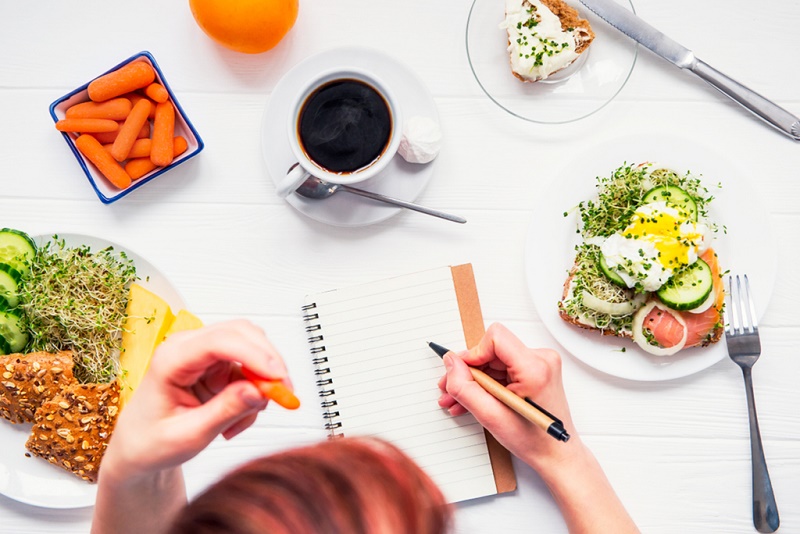The presence of essential and non-essential amino acids is mentioned in food labels, and also in several commercials. We know that they are necessary for our organism but, what exactly do they consist of?
A balanced and healthy diet is rich in amino acids, but it is important to know what exactly they are so that there is no shortage of any of them.
The lack of these compounds can unbalance our body. Next, we’ll show you everything you need to know about amino acids! What they are, what they are for and where to find them.

What are the essential amino acids?
Amino acids are organic compounds responsible for building new proteins. They contain an amino group and a carboxyl group, which are synthesized to create these proteins. There are three different amino acid groups:
- The essential amino acids
- Non-essential amino acids
- The conditional amino acids
The difference between these three types is our body able to synthesize some by itself while others do not. So we have to get some of the essential and non-essential amino acids externally.
The non-essential amino acids are those that the body can synthesize, while the essential amino acids are those that are unable to synthesize and have to be provided through food, with a diet rich in essential amino acids.
They are usually found in foods of animal or vegetable origin, but currently you can easily buy amino acid supplements at any pharmacy or market.
Functions of essential amino acids
In general, all amino acids are essential to keep our entire system balanced. The lack of any of them, especially an essential amino acid, can be noticed in a short time.
Among all its functions, we can highlight the following:
- They regenerate tissues, cells and muscles, preventing premature aging of tissues.
- Absorb and metabolize nutrients, allowing us to make the most of their benefits.
- They promote the growth of tissues and cells.
- It contributes to blood functions and especially helps to prevent heart and brain problems.
- It helps the body take full advantage of vitamins and minerals.
- It helps in the process of synthesis of digestive enzymes, promoting a good digestion that is not heavy.
- It is an essential compound of the hormones indispensable for reproduction.
- They intervene in the energy metabolism.
The body needs all these functions to be carried out correctly, so it is necessary to lead a healthy life, combining a balanced diet with a little daily exercise, for this.
How many essential amino acids are there?
This type of amino acids, as explained above, should be contributed to our body through a balanced diet rich in these organic compounds. There are many amino acids of this type that our body needs, although most can be found in the same food.
Next, we show you the Essential and non-essential amino acids:
Phenylalanine
It is necessary for the brain since it helps to produce noradrenaline. This chemical is responsible for transmitting signals between nerve cells in the brain, warning in case of danger or alertness. It also improves mood and helps in memory and learning.
Histidine
It is essential for the production of red blood cells and white blood cells. It also helps in tissue repair and maintenance of myelin sheaths. Another function is to reduce blood pressure. It is essential in case of physical exercise.
Isoleucine
In addition to helping stabilize and regulate blood sugar and energy levels, it serves to repair and heal bones, muscle tissue and skin.
Leucine
It increases the production of growth hormone and interacts with other amino acids such as isoleucine. By interacting with it, it also helps repair bones, muscle tissue and skin.
Lysine
It serves to produce collagen, produce antibodies, especially against herpes, properly absorb calcium and reduce high levels of triglycerides and cholesterol.
Methionine
Avoid disorders of the skin, nails or hair. It is very useful in case of taking contraceptives, since it prevents the accumulation of fat in the arteries and the liver, one of the side effects that these pills can produce. It works as an antioxidant and protects the body from the effects of radiation.
Threonine
It also prevents the accumulation of fat in the liver. It helps in the formation of enamel, collagen and elastin and regulates the number of proteins in the body.
Tryptophan
It is a kind of natural relaxant that reduces depression and anxiety. It helps to treat migraines, improves insomnia and induces sleep. It also reduces appetite and increases growth hormone. Because of its effects, it is very common to find tryptophan supplements.
Valina
It is used by muscle tissue as energy. It is essential to maintain tissues and maintain the balance of nitrogen in the body and muscle metabolism. It also promotes mental vigor.
To the girl
This amino acid protects from the toxic substances released by the muscle cells. It also strengthens the immune system by producing antibodies.
In case of suffering a deficit of any of these amino acids, it is best to know what foods contain them or what supplements should be used. It is best to go to the doctor first.
Essential and non-essential amino acids
Non-essential amino acids are those that our body can produce by itself. This is the main factor that differentiates them from any essential amino acid. The main non-essential amino acids are shown below.
Glutamic acid
Glutamic acid stimulates the nervous system. so it is essential for the central nervous system. Based on this amino acid, the artificial additive known as monosodium glutamate was created.
Arginine
It helps in the stimulation of growth hormones, but it also helps to reduce body fat, increase muscle mass and heal wounds.
Serina
It is essential for the metabolization of fat, the formation of neurotransmitters and as an immune system aid.
To the girl
Intervenes in fundamental processes such as maintaining the proper level of glucose.
Tyrosine
Reduces stress, appetite and sleep as well as body fat.
Cystine
This amino acid is essential to have the skin and hair in good condition.
Glycine
It is helpful when it comes to purifying the body, but also increases the level of creatinine in the musculature.
Asparagine
It is present in all processes of the central nervous system and also helps in the synthesis of ammonia.
Proline
This amino acid is important in the production of collagen.
Aspartic acid
Reduces the level of ammonia in blood after having exercised.
Glutamine
It is important in brain metabolism and is very present in the musculature in general.
Cysteine
It is synthesized by our organism, although it can also be found in certain foods such as milk. Avoid cellular oxidation and aging.
The lack of non-essential amino acids is usually due to internal problems, such as hereditary diseases. Normally, the body is responsible for regulating and producing the right amount of these amino acids.
The conditional amino acids
This group is composed largely of non-essential amino acids, except in situations of high stress or caused by a disease.
In this group we can highlight the following types of amino acids:
- Arginine
- Cysteine
- Glutamine
- Tyrosine
- Glycine
- Ornithine
- Proline
- Serina
We can say that they are a type of amino acids that generally are not essential, but they can be essential at a given time.
Where can we find Essential and non-essential amino acids?
As a general rule, we can find essential amino acids in all foods with a high protein content. These are usually foods of animal origin or of vegetable origin, although we can also add food supplements. It is better to consume foods of animal origin since those of vegetable origin generally lack some types of essential amino acids.
Here are some foods that are a good source of protein:
- Soy
- Vegetables
- Nuts
- Cereals
- Fruits
- Vegetables
- Meat
- Eggs
- Dairy products and derivatives such as cheese
- Fish
The main thing is to follow a varied and balanced diet so that there is no missing essential amino acid. Adding all the types of amino acids, there are only twenty essential for the human being.
Side effects due to lack of amino acids
In general, the lack of essential amino acids prevents the development of the organism, since it is impossible to replace the cells that die or manufacture tissues.
Normally the lack of amino acids is related to rare hereditary diseases. An example of this is Hartnup’s disease, which causes a decrease in the absorption capacity of the intestine.
Another disease related to this is homocystinuria, which causes not being able to properly decompose the amino acid methionine. It is usually a disease that occurs in newborns, which can complicate detection in time.
The lack of amino acids causes stress, fatigue or insomnia, and they usually send vitamin supplements to alleviate their lack.
Now you know what are the essential and non-essential amino acids are and how they function in our body.








